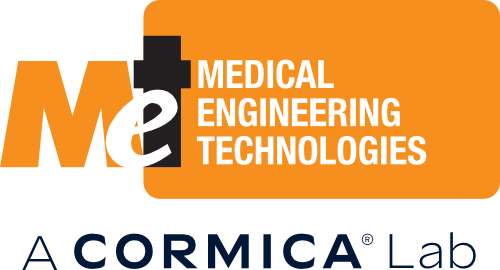What does Extractables and Leachables mean for devices and how does it relate to ISO 10993.
The new (2018) version of ISO 10993 moves the emphasis of biocompatibility from biological testing to risk analysis and chemical characterisation with toxicity risk assessment
What does this mean for medical devices? Most engineers, quality professionals and project managers will have heard of extractables and leachables from the pharmaceutical industry, and it might be worth asking whether ISO 10093-18 chemical characterisation is the same thing?
Obtaining the extract fluid for analysis
You have probably (also) seen that leachables are materials that are likely to enter the patient whilst extractables are materials that are present and have the potential to interact with the patient.
When considering a pharmaceutical container, this means that for leachables the solvents used to obtain the test study samples, the time of contact and the temperature will all be selected to obtain materials that would be released into the formulation during an extended period of storage. This is akin to accelerated ageing. To obtain the extractables a much more rigorous regime is used to access substances that are more tightly bound in the container matrix. The restraint on extractables (and devices) is to avoid accessing or creating materials that would, definitely, not be available to the patient in normal use.
For medical devices this translates into ‘simulated use extraction’ and ‘exaggerated’ or ‘exhaustive extraction’. ISO 10993-18 describes an extractable as a substance that is released in the laboratory, and a leachable as a substance that is released during use.
The storage of a drug ampoule can be reasonably well predicted. The glass materials are known and the temperatures and duration of acceptable storage are indicated. The environment in which an implanted device is placed is much more variable. The temperature is well controlled, but the chemical and mechanical stresses will depend on the patient and the placement, and they will change over time on short and long timescales. This makes the importance of increased extraction grow as the intensity, intimacy and time of contact in
Therefor as the term of use of a device increases, the leachables approach the extractables. ISO 10993-18 includes a definition of dissolution for devices that would completely dissolve whilst maintaining the integrity of the molecular structure of its components. Parts 13, 14 and 15 (of ISO 10993) deal with degradation components.
Hence for a short term, surface contacting device, simulated use extraction conditions are recommended in ISO 10993-18 (although the FDA may require exaggerated extraction) and exhaustive extraction for long term devices (again FDA requirements may differ).
At MET we generally apply the extraction conditions detailed in ISO 10993-12 with 37°C being used for simulated use and higher temperatures and higher power solvents being used for higher risk products. The exaggerated conditions provide a method of accelerating the ageing of the device and simulating the harsher conditions of an internal environment.
Once the extract methods have been selected and processed there is much overlap between the analytical methods used both in pharma and with devices.
Analysis of the extract fluid
For the extracted materials ICP-MS, GC-MS and LC-MS are most commonly applied. These methods allow quantification of the majority of the organic materials (across a wide range of volatilities) that might be found and of any associated inorganic elements. A wide variety of other analyses are listed in the standard. These may be applicable to the biocompatibility of certain products. They are also useful for comparing materials after production or design changes.
Toxicity Assessment
The information obtained in the chemical characterisation analysis requires further examination to become useful as a guide to biocompatibility. It must be assessed by a toxicologist to compare the toxicity of any substances found to the required biocompatibility end points. There are a variety of sources of information on the toxicity of substances. Equally there is a variety of assessment techniques. One frequently applied is the Safety Concern Threshold (SCT).
When the assessment is complete the resulting document is the Toxicity Risk Assessment (TRA). This, in turn, often forms the main constituent of the Biological Evaluation Report (BER)
Conclusion
There are a lot of similarities between extractables and leachables studies, and the chemical characterisation of medical devices. The goal, for both, is to demonstrate the safety of the patient application (with an additional continued API efficacy goal for pharmaceuticals). The extraction processes are similar, the chemical analyses are similar and the use of the data is similar.
There is variation in the details and the frequency of testing, according the patient exposure to a device or the mode of administration of a pharmaceutical.
